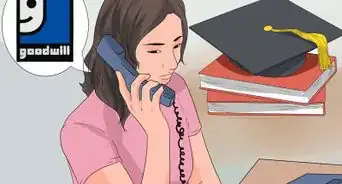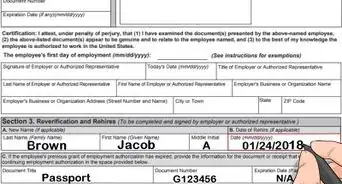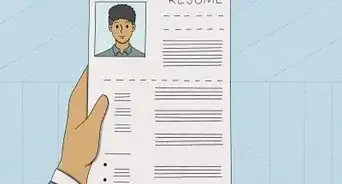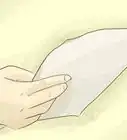wikiHow is a “wiki,” similar to Wikipedia, which means that many of our articles are co-written by multiple authors. To create this article, volunteer authors worked to edit and improve it over time.
This article has been viewed 100,082 times.
Learn more...
A retirement letter, contrary to the belief that it is an informal farewell letter, requires attention to detail and a professional tone. The main purpose of this letter is to notify your employer of your retirement, thank and acknowledge your co workers, and to show your willingness to assist the company in the future to the best of your abilities.
Steps
Brainstorming Before You Write
-
1Discuss your retirement plan with HR. Set up a meeting with a representative of the Human Resources (HR) department to discuss the details of your retirement plan. Doing this before you write your letter will help you to get an idea about how to shape your letter.[1]
- When you meet with HR, bring any questions you have with you and take notes during the meeting. Jot down important details, as well as details you feel might pertain to your letter. The person you meet with may give you some pointers about your letter that apply specifically for your company.
-
2Think about the positive aspects of your job. Keep in mind that you aren’t resigned, you’re retiring. You’ve served your organization with dedication and have gracefully made it to the point of retirement. Therefore your letter should portray this moment in a positive light. You don’t have to praise each co worker individually, but do your best to avoid mentioning any grievances when you brainstorm what to put in your letter.[2]
- Make a list of things that you love about the company, as well as accomplishments you achieved during your time working for this employer and other highlights of your career.
Advertisement -
3Understand that you must use a formal tone. You may be feeling a little sad about leaving your company, or maybe even reminiscent. However, it is important to remember that you should keep your emotions out of this letter; save it for personal letters or emails that you give to your coworkers.[3]
- Keep your tone formal because this letter will be a part of your retirement document. As such, avoid referring to your feelings, making jokes, or using sarcasm.
-
4Create a plan for any projects that you are leaving behind so that you can refer to them in your letter. Your retirement means the company will be losing an employee and will need a replacement to fill your position. In your letter you should provide some instructions about any ongoing tasks or projects that you started, and what needs to be done to completely them if you will not be doing so.[4]
- Prepare a plan for each individual project and refer to each in your letter. Each plan should contain details discussing how the replacement can easily pick up where you left off, making your transition out of the company that much smoother.
Writing Your Letter
-
1Create your greeting. You will be giving your formal retirement letter to your boss. As such, you will need to address the letter formally, even if you are on a first name basis with the person you work for. Use Mr., Mrs., or Ms. when addressing your letter.[5]
- You can choose to use your boss’s full name, or to only use his or her last name. If you were to use your boss’s full name, you would write: “Dear Mr. Cody Shier”. If you were to use only the last name, you would write: “Dear Mr. Shier”. You would not write “Dear Mr. Cody”.
-
2Make sure to address the letter specifically to the person you are giving it to. As mentioned in the previous step, you will be addressing your letter to your boss. Because of this, you would not address the letter using phrases like “To whomsoever it may concern”. A retirement letter is not an open letter; as such, it must be addressed to a specific person.
- Double check that you have spelled the recipient’s name correctly.
-
3Break your letter up into three paragraphs. Your retirement letter can be divided into three paragraphs to give your letter structure and clarity. In each of these three paragraphs, you will discuss a different topic or topics.
- Each paragraph will be described in detail in the following steps.
-
4Discuss your intention to retire in your first paragraph. Your first paragraph should be used to discuss your intention to retire, including such details as the name of your organization, your designation, and your planned last day at your company. Always double check these details, as this information will be used by other departments for documentation purposes.[6]
- An example first paragraph would contain information like: “I would like to take this opportunity to inform Cool Company of my intended retirement. I will be retiring from the position of Expert Candy Taster on September 18, 2014.”
-
5Discuss your time spent at the company in your second paragraph. Your second paragraph should contain information pertaining to your time spent at the organization. This is when you highlight the enriching opportunities you have had, the people who made an impression on you or inspired you, and the overall general (positive) feeling you have for the company.[7]
- Example: “I have been with Cool Company for nearly 11 years, during which time I have had many enriching and rewarding experiences. I would like to thank all of the people (here you would like out people like those in management, colleagues, and subordinates) for their support and assistance. I feel truly honored to have been able to serve by their sides while we worked to provide candy to the world.”
-
6Mention your desire to make your transition out of the company as smooth as possible in your third paragraph. Your third and final paragraph should express your desire to make this transition as smooth for the company, and the person who will be taking your place, as possible. Mention your intention to provide assistance for your replacement. You can also mention how you are planning to spend your days in retirement, and that you would be happy to assist the company in any way that you can.[8]
- Example: “I know that my leaving disrupts several projects, but I have already prepared plans for my replacement that outline in detail each step that is needed to complete the tasks. I will also be available to assist said replacement in any way that I can. During my retirement, I will be sailing my boat around the world, but will be able to be reached by several means outlined at the end of this letter in case there is anything I can do to assist this wonderful company.”
-
7End on a positive note. Your letter should end on a good note that involves extending your best wishes to the organization, your colleagues, and your replacement. You could also include a final word of thanks and acknowledgement.
- Example: “Thank you very much for the wonderful memories. I look forward to following the successes of this grand company, and send my best wishes to my dear colleagues, as well as Ms. Matilda Mathers, who will be taking over my position. It has been an honor working here at Cool Company.
-
8End your letter. After you have completed your paragraphs, sign off with an endnote such as “Yours truly” or “Sincerely,”. Writing “Sincerely” is generally thought to be the most formal way to sign off.
- Below your endnote, you would sign the letter. Below your signature, place your printed name and your position at the company.
-
9Provide contact details. Be sure to provide an email address, a phone number and your current address. The company can refer to these details when preparing your retirement document.
- Double check details so that there are no mistakes. A wrong phone number or email address could lead to a great deal of confusion.
-
10Proofread your letter. Once you have written your letter, go over it again to make sure that there are no awkward sentences or grammatical errors. Consider having a friend who does not work at the company take a look at it to help you spot any errors you might have missed.
Community Q&A
-
QuestionWhat do I put in to thank work colleagues for a retirement present?
 Kim GTop AnswererThis should be a separate letter from your retirement letter. You can address it to your colleagues, telling them it was a pleasure working with them and how much you appreciate their thoughtfulness.
Kim GTop AnswererThis should be a separate letter from your retirement letter. You can address it to your colleagues, telling them it was a pleasure working with them and how much you appreciate their thoughtfulness. -
QuestionIs it OK to hand-write my retirement letter?
 Community AnswerWhile a typed letter is typically seen as more professional, a handwritten letter may be suitable, depending on your work environment and relationship with the recipient.
Community AnswerWhile a typed letter is typically seen as more professional, a handwritten letter may be suitable, depending on your work environment and relationship with the recipient.
References
- ↑ https://www.leisurefreak.com/non-financial-aspects-of-early-retirement/announcing-your-early-retirement/
- ↑ https://fairygodboss.com/career-topics/retirement-letter-tips
- ↑ https://www.leisurefreak.com/non-financial-aspects-of-early-retirement/announcing-your-early-retirement/
- ↑ https://money.usnews.com/money/retirement/second-careers/articles/2018-09-04/how-to-write-a-retirement-letter-to-your-employer
- ↑ https://eforms.com/resignation-letter/retirement/
- ↑ https://fairygodboss.com/career-topics/retirement-letter-tips
- ↑ https://fairygodboss.com/career-topics/retirement-letter-tips
- ↑ https://fairygodboss.com/career-topics/retirement-letter-tips
- ↑ https://money.usnews.com/money/retirement/second-careers/articles/2018-09-04/how-to-write-a-retirement-letter-to-your-employer
About This Article
To write a retirement letter, start with a formal greeting like "Dear Mr. Simpson" and format the rest of your letter to have three main paragraphs. In the first paragraph, discuss your intention to retire and include details like your planned last day at the company. Next, highlight the enriching opportunities and rewarding experiences you've had with the company in the second paragraph. Then, in the third paragraph, discuss your plans for a smooth transition and your intention to provide assistance for your replacement. For tips on ending your letter on a positive note, read on!
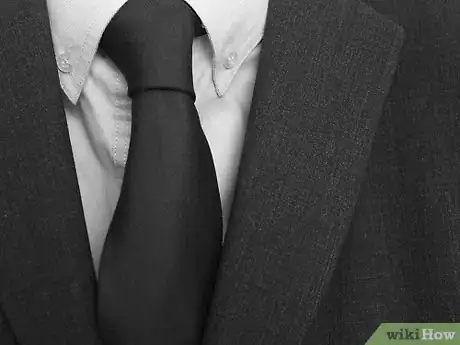


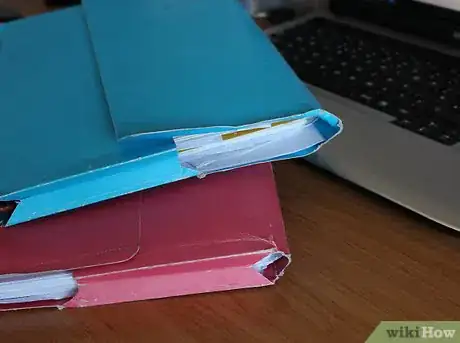
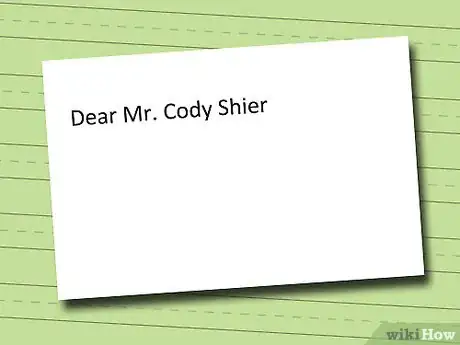
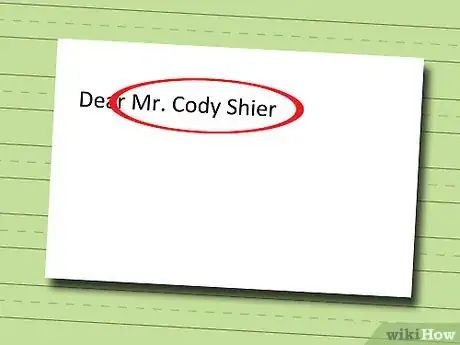
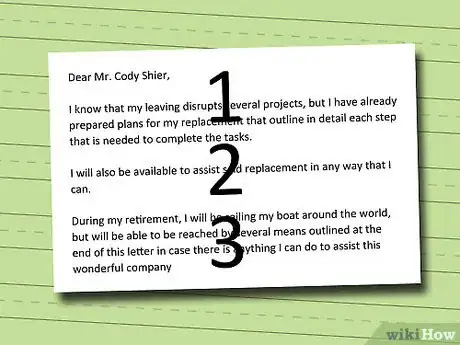
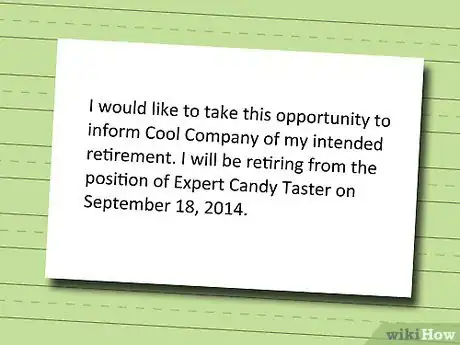
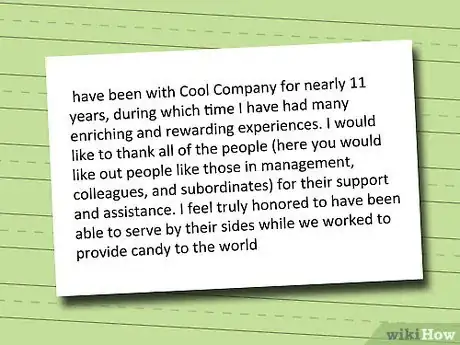

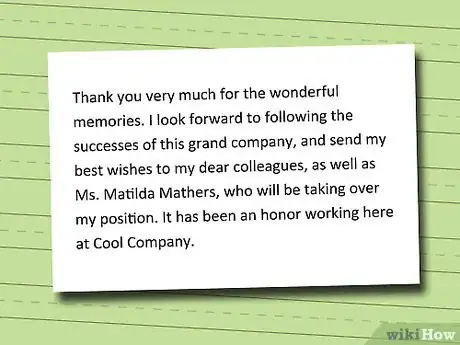


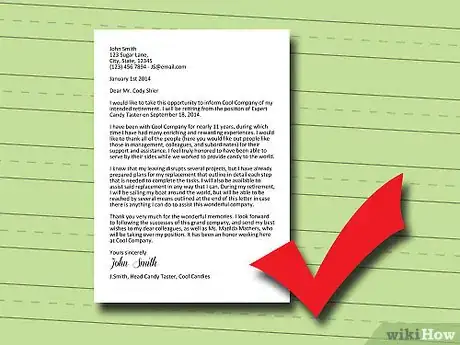
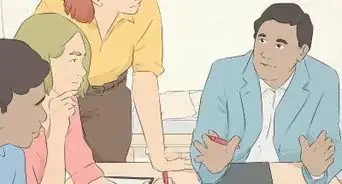

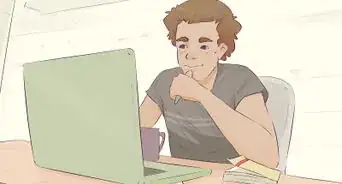


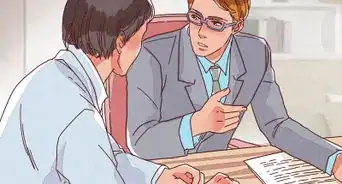


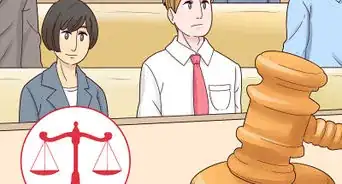
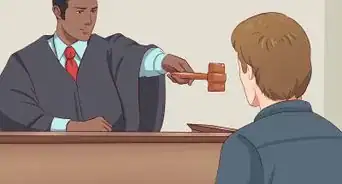
-Status-Step-6.webp)
